Physiological Factors (Part 1)
How alcohol and other drugs enter and leave the body, the rate of absorption, and the elimination of alcohol and other drugs.
The National Institute of Drug Abuse (NIDA) provides excellent educational materials on how alcohol and drugs affect the brain and central nervous system. The following information is provided by NIDA in their “Mind Over Matter” series and in their “The Science of Addiction” booklet.1,2
The brain is an incredibly complex organ. Although the brain only weighs about three pounds, it controls thoughts, feelings, and bodily functions. Each of the major regions of the brain controls functions that are vital to our survival and health. Alcohol and drugs cause havoc with the functioning of our brain and nervous system and can result in addiction and many other problems.1,2
The major regions of the brain and the functions performed by each region are as follows:
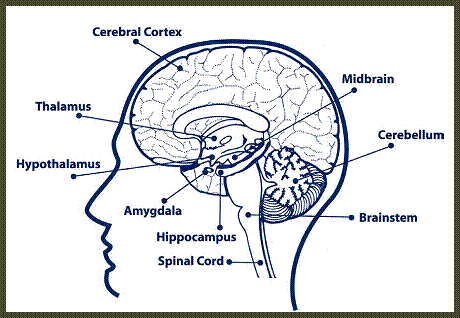
- Brain Stem: The brain stem connects the brain to the spinal cord and controls many basic bodily functions including breathing, heart rate, eating, and sleeping.
- Cerebellum: The cerebellum controls balance, posture, and skilled repetitive movements.
- Limbic System: The limbic system is made up of the hippocampus and the amygdala. These parts of our brain affect our emotions and motivations to include fear, anger, and sex. Also, the limbic system is involved in memory and in feelings of pleasure. When we experience pleasure from activities like eating and sex, we are motivated to perform these activities; this motivation is important to our very survival. Drugs exert great control over us because they act on the brain stem and limbic system.
- Thalamus and Hypothalamus: The thalamus plays a role in sensory perception and movement. The hypothalamus controls many important functions like body temperature.
- Cerebral Cortex: The cerebral cortex makes up about two-thirds of the brain and is responsible for thought, reasoning, decision making, planning, problem solving, memory, emotion, language, and sensory information to include sight, hearing, touch, movement, and smell.1,2
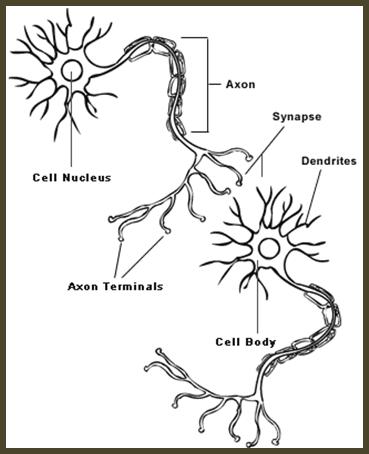 The brain is composed of billions of nerve cells called neurons. Neurons are used by the brain and nervous system to form communication pathways. Alcohol and drugs affect the way our nerve cells, or neurons, transmit and receive messages. Nerve cells are composed of three main parts:
The brain is composed of billions of nerve cells called neurons. Neurons are used by the brain and nervous system to form communication pathways. Alcohol and drugs affect the way our nerve cells, or neurons, transmit and receive messages. Nerve cells are composed of three main parts:
- Cell body: controls the neuron.
- Dendrites: receive messages from other neurons and transmit them as electrical impulses to the cell body.
- Axons: transmit messages from the cell body to the dendrites of other neurons or to body tissues. The messages from the cell body move as electrical impulses down the axons. Axons are covered by a Myelin sheath or covering. The thicker the covering, the faster the nerve impulse travels.1,2
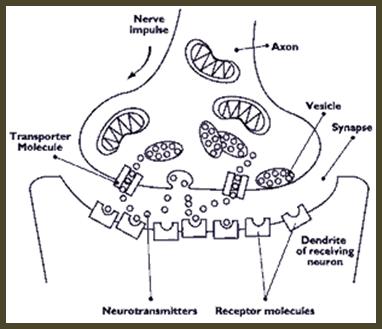 Neurons and their accompanying axons and dendrites are close together. The space between the transmitting axons of one neuron and the receiving dendrites of another is called a synapse. The axons of a sending neuron transmit messages to the dendrites of a nearby receiving neuron or to body tissues through a process called neurotransmission. In the process of neurotransmission, chemical substances, known as neurotransmitters, are released by the axons of the sending neuron and are received by the receptor molecules in the dendrites of the receiving neuron. Neurotransmitters are stored in the vesicles of the axons and are released from and reabsorbed into the axon by transporter molecules.1,2
Neurons and their accompanying axons and dendrites are close together. The space between the transmitting axons of one neuron and the receiving dendrites of another is called a synapse. The axons of a sending neuron transmit messages to the dendrites of a nearby receiving neuron or to body tissues through a process called neurotransmission. In the process of neurotransmission, chemical substances, known as neurotransmitters, are released by the axons of the sending neuron and are received by the receptor molecules in the dendrites of the receiving neuron. Neurotransmitters are stored in the vesicles of the axons and are released from and reabsorbed into the axon by transporter molecules.1,2
Drugs of abuse work through the brain’s reward system. The brain is structured to reward behaviors, like eating and sex, which are required for the survival of mankind. The brain’s reward system uses pleasure to reinforce desired activities. This reward system works through a neurotransmitter called dopamine. Like neurotransmitters, drugs of abuse are chemicals, and they affect the brain by interfering with the chemical neurotransmission process. Drugs of abuse affect the brain’s reward system by overloading the brain’s communication system with the neurotransmitter dopamine. Drugs can interfere in the following ways:
- Act like neurotransmitters.
- Stimulate the release of more than normal amounts of neurotransmitters.
- Block receptors and keep messages from being transmitted.
- Prevent previously released neurotransmitters, like dopamine, from being reabsorbed back into the transmitting axons. If dopamine cannot be reabsorbed, the synapse remains filled with dopamine, and receptor neurons receive intense and prolonged stimulation creating a drug-induced pleasurable “high.”1,2
After drinking just one alcoholic beverage or using drugs, judgment and skill begin to be affected. With alcohol, within a few minutes after consuming that first drink, alcohol travels from the stomach, to the blood stream, then to the brain. And once in the brain, alcohol affects those areas that control judgment and skill.3,4
 While alcohol can be consumed quickly, it takes significant time to eliminate the alcohol from our bodies. Blood Alcohol Level (BAL) is a measure of the amount of alcohol in a person’s body. The only thing that decreases BAL is time. People have tried many ways to speed the process of sobering up and reducing BAL: cold showers, exercise, and black coffee are a few of the most popular attempted remedies. While these measures may make a person feel a little better, they do not reduce impairment time, and as many have noted, the only thing these mythical remedies do is provide a “clean, tired, wide-awake” impaired person.
While alcohol can be consumed quickly, it takes significant time to eliminate the alcohol from our bodies. Blood Alcohol Level (BAL) is a measure of the amount of alcohol in a person’s body. The only thing that decreases BAL is time. People have tried many ways to speed the process of sobering up and reducing BAL: cold showers, exercise, and black coffee are a few of the most popular attempted remedies. While these measures may make a person feel a little better, they do not reduce impairment time, and as many have noted, the only thing these mythical remedies do is provide a “clean, tired, wide-awake” impaired person.  The body uses oxidation and elimination (going to the bathroom) to get rid of alcohol. The liver performs the oxidation process for the body, and approximately 90% of alcohol is processed in this manner. Each hour the body processes about three-fourths of a standard sized drink; however, this depends on weight, gender, and other factors. Using this guideline, it takes at least 80 minutes for the body to get rid of the negative effects of a single drink. Therefore, even if a person consumes just one drink per hour, his or her BAL will continue to climb.3,4,5
The body uses oxidation and elimination (going to the bathroom) to get rid of alcohol. The liver performs the oxidation process for the body, and approximately 90% of alcohol is processed in this manner. Each hour the body processes about three-fourths of a standard sized drink; however, this depends on weight, gender, and other factors. Using this guideline, it takes at least 80 minutes for the body to get rid of the negative effects of a single drink. Therefore, even if a person consumes just one drink per hour, his or her BAL will continue to climb.3,4,5
The following chart shows how long it takes for a person to process and get rid of the negative effects of consuming alcohol:
| Blood Alcohol Level (BAL) | Time for body to process and eliminate |
| .02-.03 | 1 hour and 20 minutes |
| .04-.05 | 2 hours and 40 minutes |
| .06-.07 | 4 hours |
| .08-.09 | 5 hours and 20 minutes |
| .10-.11 | 6 hours and 40 minutes |
| .3 or higher | Possible coma, deep sleep, death |
According to Florida law, a driver is presumed to be impaired with a blood alcohol level (BAL) of .08. As this chart indicates, if your BAL is at the presumptive limit of .08, it will take over 5 hours for your body to process and eliminate the alcohol from your system. About half of the drivers involved in fatal crashes involving alcohol have a BAL of .15 or higher, about twice the presumptive limit of .08. With a BAL of .15, it could take 10 to 12 hours to process the alcohol from your system. If a person comes home at 2:00 AM after consuming alcohol, then gets a few hours of sleep, wakes up, showers, and has breakfast and coffee, that person would still be very impaired when driving to school or work.6
In addition to the amount of alcohol consumed, the following factors have an impact on BAL:
- Body Weight: People with lower body weights have less body fluid; therefore, drinking will have an even more negative impact on BAL.
 Food: If a person drinks on an empty stomach, the negative impacts of drinking are realized more quickly as having food in the stomach causes alcohol to be absorbed more slowly. However, it is important to understand that alcohol consumed with food or on a full stomach will eventually be absorbed causing BAL to rise and generating the associated negative impacts. Food in your stomach will delay the negative effects of drinking, but the negative effects are still going to happen.
Food: If a person drinks on an empty stomach, the negative impacts of drinking are realized more quickly as having food in the stomach causes alcohol to be absorbed more slowly. However, it is important to understand that alcohol consumed with food or on a full stomach will eventually be absorbed causing BAL to rise and generating the associated negative impacts. Food in your stomach will delay the negative effects of drinking, but the negative effects are still going to happen.
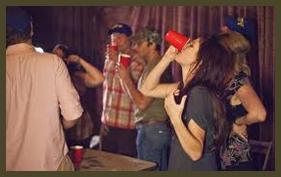 Female Drinkers are More Severely Impacted: Women usually have more body fat per pound than men, and alcohol does not go easily into fat cells so it stays longer in the blood of women. Also, women do not produce as much of the enzyme, alcohol dehydrogenase, which breaks down alcohol in the stomach. Therefore, for each drink consumed, a woman will absorb about 30% more alcohol into her system than a male. When these factors and body weight are considered together, the same amount of alcohol consumption can have twice the impact on a woman that it would have on a man.
Female Drinkers are More Severely Impacted: Women usually have more body fat per pound than men, and alcohol does not go easily into fat cells so it stays longer in the blood of women. Also, women do not produce as much of the enzyme, alcohol dehydrogenase, which breaks down alcohol in the stomach. Therefore, for each drink consumed, a woman will absorb about 30% more alcohol into her system than a male. When these factors and body weight are considered together, the same amount of alcohol consumption can have twice the impact on a woman that it would have on a man.
- Young Drivers: Usually, equal amounts of alcohol consumption will have a greater negative impact on young drivers. Younger people have less experience with drinking and driving -- an especially deadly combination. One young female professional told our company that when she was arrested for DUI, she had a Blood Alcohol Level of .20, two-and-a-half times the .08 BAL when a driver is presumed by law to be impaired. When we asked what her thoughts were when she made the decision to drive after consuming so much alcohol, she replied, “This is embarrassing to admit, but I do not even remember getting into my car.” An equally impaired middle age person, with more drinking experience, could be expected to remember leaving the party, turning down a friend’s offer for a ride home, and then getting into his vehicle to drive home. However, the young, inexperienced drinker did not even remember getting into her car.
- Emotional state, physical condition, medications, and other factors also increase the negative effects associated with drinking and driving.3,4,5,7
The way a drug enters the body is important because the faster a drug gets into the blood stream and to the brain, the sooner the person will be affected by the drug. And the intensity of the resulting reaction will be greater as well. All of the blood in our body is recycled in about one minute so once a drug enters the blood stream, it gets to the brain in just a matter of seconds.
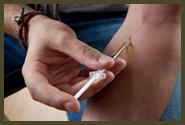 Injection: Injection is the fastest way to get drugs into the bloodstream. Drugs injected into the blood stream go directly to the brain, and the effects are immediate. Also, drugs can be injected into muscle or under the skin. This process will delay the resulting effects for 15 minutes or longer.
Injection: Injection is the fastest way to get drugs into the bloodstream. Drugs injected into the blood stream go directly to the brain, and the effects are immediate. Also, drugs can be injected into muscle or under the skin. This process will delay the resulting effects for 15 minutes or longer.

- Inhalation or smoking: Drugs that are smoked or inhaled move into the blood stream from the lungs. The rate of absorption depends on the size of the molecules being absorbed. The effects from volatile gasses are felt almost immediately while drugs that have larger molecules, like marijuana when smoked, are absorbed more slowly.
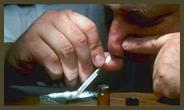 Absorption across body tissue: When cocaine is snorted, it enters the blood stream after being absorbed through tissue in the nose. The nicotine in smokeless tobacco is absorbed through tissue in the mouth.
Absorption across body tissue: When cocaine is snorted, it enters the blood stream after being absorbed through tissue in the nose. The nicotine in smokeless tobacco is absorbed through tissue in the mouth.

- Oral consumption by swallowing, eating, or drinking: Taking drugs orally is the slowest method for getting the drug into the blood stream.
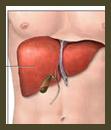 Drugs leave the body through a process called metabolism. Much of the final work of metabolism is done in the liver, where the molecules from food products and drugs are broken down before they are eliminated from our bodies. Drugs are difficult to break down, and some drugs must be processed through the liver several times before they can be eliminated. In the process of metabolism, many smaller new products, called metabolites, are formed, and it may take a long time to eliminate these products from our bodies. For example, it may take 5 days to eliminate the metabolites from marijuana, while the metabolites from alcohol are eliminated in about a day.8
Drugs leave the body through a process called metabolism. Much of the final work of metabolism is done in the liver, where the molecules from food products and drugs are broken down before they are eliminated from our bodies. Drugs are difficult to break down, and some drugs must be processed through the liver several times before they can be eliminated. In the process of metabolism, many smaller new products, called metabolites, are formed, and it may take a long time to eliminate these products from our bodies. For example, it may take 5 days to eliminate the metabolites from marijuana, while the metabolites from alcohol are eliminated in about a day.8
REVIEW QUESTIONS FOR SECTION 2
The Section Review Questions will help to prepare you for the Final Exam; incorrect answers will not count against you. You must complete the Section Review Questions before moving on to the next section of the course.
0
1. National Institute on Drug Abuse. Mind Over Matter: The Brain’s Response to Drugs Teacher’s Guide (http://teens.drugabuse.gov/mom/tg_intro.php). NIH Pub. No. 020-3592. Bethesda, MD: NIDA, NIH, DHHS. Printed 1997. Reprinted 1998, 2000, 2003.
2. National Institute on Drug Abuse. The Science of Addiction: Drugs, Brains, and Behavior (http://www.drugabuse.gov/ScienceofAddiction/). NIH Pub. No. 07-5605. Bethesda, MD: NIDA, NIH, DHHS. 2007, Reprinted February 2008.
3. American Automobile Association (AAA). How to Drive: The Beginning Driver’s Manual. 14th edition, pp 69-80.
4. American Automobile Association (AAA). Responsible Driving. McGraw-Hill Education, Mar 7, 2005, pp 58-61.
5. Johnson M, Mottola F. Drive Right. Prentice-Hall, 2002, pp 315, 318-320.
6. Traffic Safety Facts 2022 Data, Published Jun 2024, Alcohol-Impaired Driving, NHTSA, DOT HS 813 578. Retrieved Jul 21, 2024.
7. U.S. Department of Transportation, National Highway Traffic Safety Administration. The ABCs of BAC. DOT HS 809 844. Available at: http://www.nhtsa.gov/links/sid/ABCsBACWeb/page2.htm. Retrieved April 24, 2013.
8. Dye C. Drugs and the Body: How Drugs Work. A Do It Now Publication, July 2007. Available at: http://www.doitnow.org/pages/223.html. Retrieved April 24, 2013.
